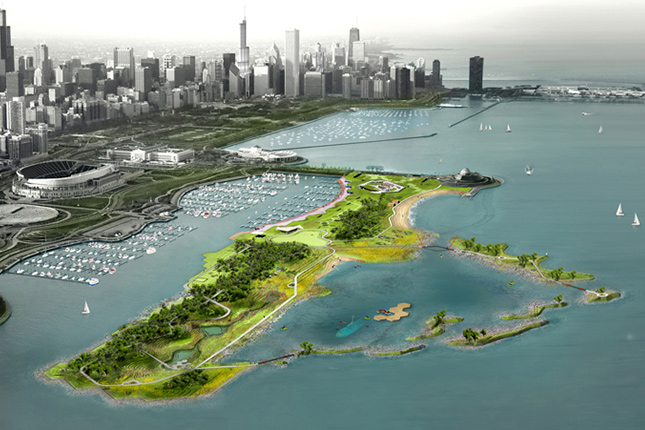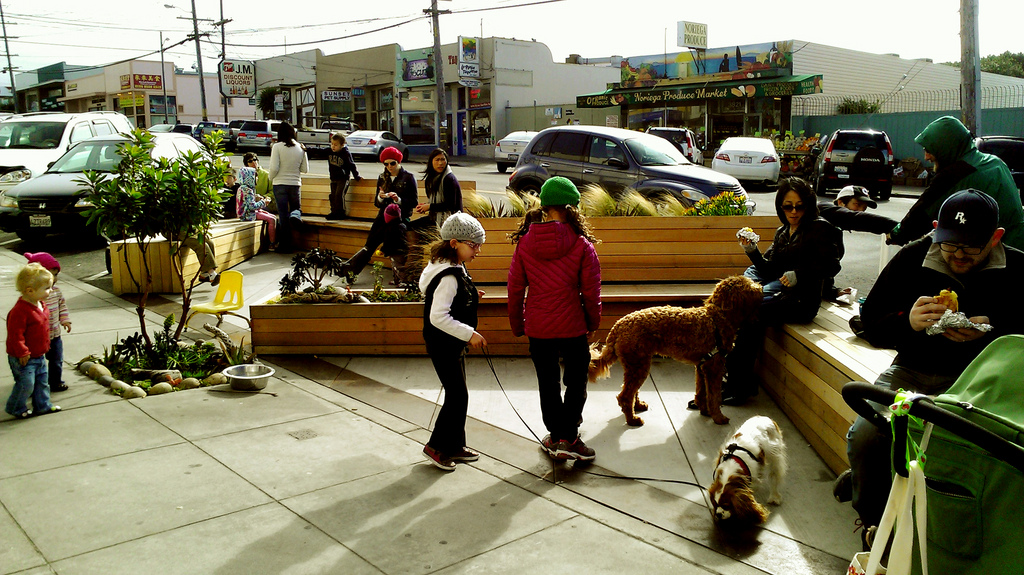Eight years after the first “parklet” occupied a parking space in San Francisco as an act of protest, these mini-parks have become a favorite “placemaking” tool of urbanists across the country. A little wood platform, some sod, tables and chairs, and boom, you’ve got a new urban park — so long as you keep feeding the meter.
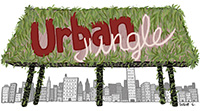
Susie CagleJoin Grist as we explore the wild landscapes of our cities.
In San Francisco, parklets have graduated from do-it-yourself novelties to government-sanctioned parts and parcels of the urban landscape, with a little influence from New York City plazas and European open-streets movements. “We took this Park(ing) Day model, which is really an act of civil disobedience, and we sort of codified it, institutionalized it, and made it like a legal thing to do,” says Paul Chasan, the parklet program manager in the San Francisco Planning Department.
Yes, San Francisco has a parklet program. It’s called “Pavement to Parks.” And with 40 parklets on the ground currently, and over 40 more in some stage of the permitting and development process, SF is leading the way on these little parking spot occupiers, and redefining what they can and should be.
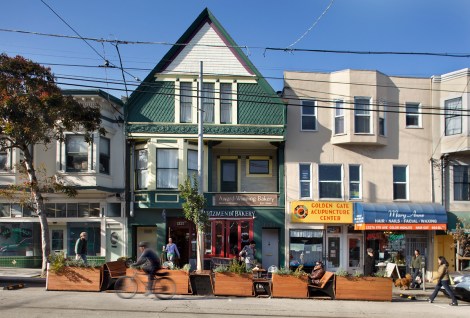
San Francisco Planning Department
The city’s parklets guidebook [PDF], authored by Chasan and released in February, reads kind of revolutionary, at least so far as city infrastructure goes. With explicit goals of encouraging non-motorized transportation, eco-friendly design, and reshaping neighborhood interaction, these teeny parklets pack a big political punch.
“In terms of changing the dialog about what the public realm can be, I think it’s been really successful, both with the public and within the city bureaucracy itself,” says Chasan, who has headed up the program for two and a half years. “When you park your car on the street, you’re essentially privatizing a public space. So when you turn it into something for everyone, it becomes a very literal metaphor.”
Even when they take over that private parking spot, parklets still straddle an odd private-public line. Each one is sponsored and bankrolled by a local entity, most often a business, and can cost about $20,000-30,000 — a significant investment for what is truly a public space. Those parklets outside coffee shops and cafes may seem like an extension of the restaurant that ponied up that cash, but they’re really not. The city requires that parklets look and feel public and separate from the sponsoring business.
“Sometimes people get upset if they feel like the parklet feels private, like it doesn’t live up to the civic ideals of the program,” says Chasan. “Like ‘This is supposed to be for everybody and it doesn’t feel like it’s for everybody.’ They should get upset about that if that’s the case.”
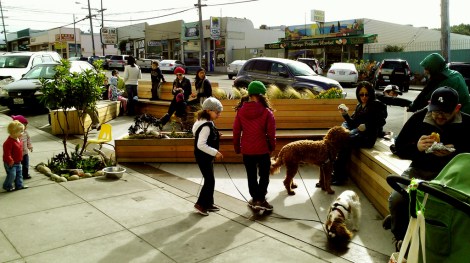
San Francisco Planning Department
But that public-private relationship cuts both ways. “For a business owner, it gives them a different relationship with their neighborhood,” says Chasan. “When I talk to the sponsors a lot of them get really really excited about the community-building side, creating a gathering space — this sort of altruistic act.”
In one neighborhood at the western edge of the city, a new parklet has solved problems for a small commercial district that had “all the ingredients” for commercial success, but no public space. “This parklet’s gone in and it’s slowly become like a focal point for the neighborhood,” says Chasan. “It’s encouraging pedestrian activity and it’s encouraging neighbors to get to know each other.”
The primary goal of the parklet program is to encourage that kind of neighborhood intersectionality — helping business is secondary. To this end, Chasan wants to promote more residential parklets.
So far, though, there’s only one parklet sponsored by a private homeowner. But even though he is ultimately responsible for it — and it’s right in front of his house — it apparently takes a village to raise a baby parklet.
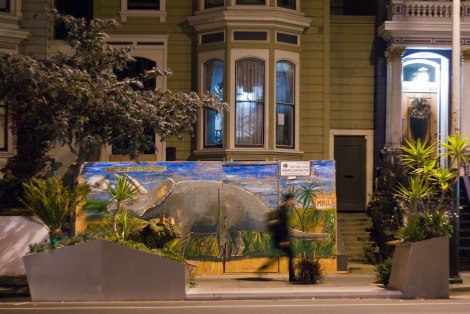
geekstinkbreathResidential parklet in San Francisco’s Mission District, complete with dino topiary.
“Sometimes it’ll get tagged [with graffiti] and it’ll get cleaned off before he can even get to it — the neighborhood takes care of it, which is really cool,” says Chasan, who’s currently fielding parklet applications from two more homeowners and the downtown offices of the startup Pinterest.
There’s also the matter of the cool kids. “Some of the first [parklets] went in on Valencia Street, which is one of our hipster spots in the city,” he says. “There are a lot of them there, so people sort of associate them with a certain type of business. But we’re seeing them move to other places now — we’ve got an application in for the first Chinatown parklet.”
That kind of broader acceptance of this new form of city infrastructure is indicative of the parklet program’s influence over the parklet users, builders, and permitters. “What we’re seeing is a whole new class of people coming out of the woodwork that are participating in placemaking and community building. There’s actually a lot of demand for that — there’s a hunger for that,” he says.
For government, “the success of this program has created a window of opportunity to try out new ideas. It’s helping evoke a culture of experimentation in the city,” says Chasan.
In its latest round of applications, one city traffic engineer has proposed a totally new type of parklet that’s not meant for people at all: raised gardens that would act as bulb-out “chokers” in traffic lanes, slowing cars down and adding a bit of greenery to the streetscape. It’s a traffic-calming measure that other cities have tried, but this would be the first application in San Francisco — and by going the parklet route, the city could try it out without the cost and disruption of tearing up the road.
The Pavements to Parks program and mindset stands to make the city more nimble overall. “A lot of people look at the city and see a landscape that’s really durable and permanent-feeling — it’s kind of built out of stone and brick and concrete,” says Chasan. “But actually cities are dynamic, living things — they’re changing all the time.”
These unassuming little parklets might be the ultimate civic gateway drug, especially with a planner like Paul Chasan at the helm.
